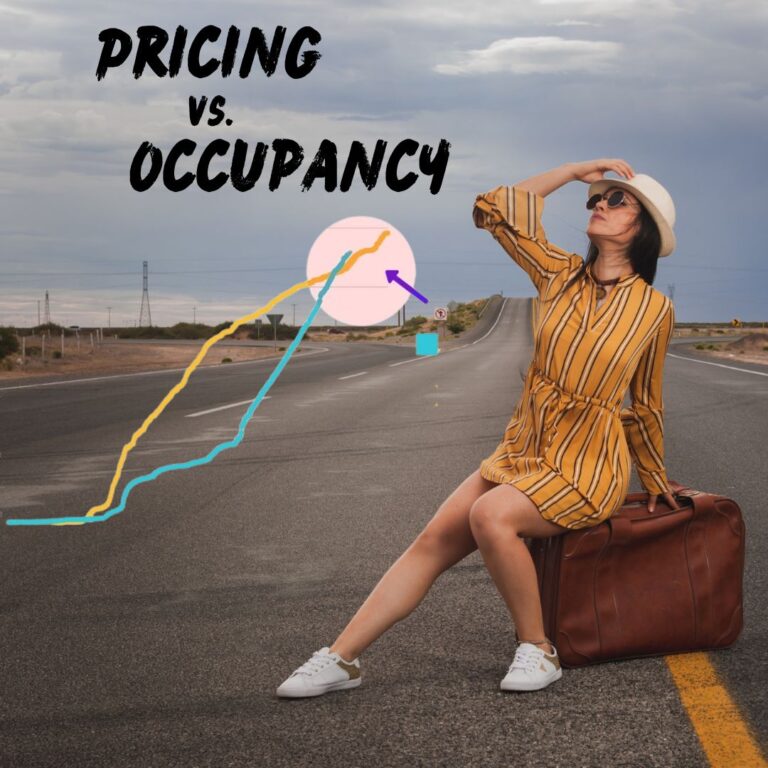If you own a vacation home rental, you already know that one of the trickiest aspects of the business is setting the right price. Too high and you risk having no bookings, but too low and you might not be maximizing your profits. It’s like balancing on a tightrope, with success on one side and an empty house on the other. In this article, we’ll delve into the challenges of marketing your rental and discuss the pros and cons of two different pricing strategies.
1. Holding Out for a Higher Rate Let’s say you have a beachside property that could easily fetch $400 per night during peak season.
Advantages:
- Higher Profit Margins: If you successfully book even a few nights at this rate, you’re already making substantial revenue.
- Perceived Value: A higher price might lead potential guests to perceive your property as luxurious or exclusive.
Challenges:
- Risk of No Bookings: If tourists find cheaper alternatives, your property might remain vacant.
Example: In a month with 30 days, if you book 10 nights at $400, you make $4000. However, for the remaining 20 days, the property sits empty.
2. Lowering the Rate to Increase Occupancy Instead of $400, consider pricing your property at $300 per night to attract more guests.
Advantages:
- Higher Occupancy Rates: A more competitive price can lure in more guests, leading to fewer vacant days.
- Consistent Cash Flow: Regular bookings ensure a steady income, even if the profit margin is lower per booking.
Challenges:
- Potentially Lower Total Earnings: Although you might get more bookings, you’re earning less for each one.
Example: For the same 30-day month, you might book 20 nights at $300, earning $6000. Even though each guest pays less, the consistent bookings mean more total revenue.
3. A Middle Path – Dynamic Pricing There’s a third strategy that many vacation home owners swear by – dynamic pricing. This involves adjusting your rates based on demand, seasonality, and other factors.
Advantages:
- Flexibility: You can charge higher rates during peak season and reduce prices during off-peak times to encourage bookings.
- Optimized Earnings: By constantly adjusting prices, you can capture both high-paying guests and those looking for a deal.
Challenges:
- Requires Active Management: Dynamic pricing means frequently updating your rates, which can be time-consuming.
Example: Over our hypothetical 30-day month, you might book 15 nights at $400 during a peak period, earning $6000, and then another 10 nights at $250 during an off-peak period, adding another $2500, totaling $8500.
In Conclusion
While holding out for a higher rate might yield more profit per booking, the risk of no bookings at all is real. On the flip side, lowering the rate can assure more consistent bookings and revenue, but you might be underselling your property’s potential. For many, the middle path of dynamic pricing offers a balanced approach.
Remember, every property and market is unique. It’s crucial to understand your audience, track your bookings, and adjust your strategy based on real-world feedback. Whichever approach you choose, the goal remains the same: to provide guests with unforgettable experiences while maximizing your profits.



